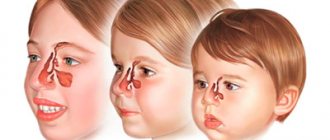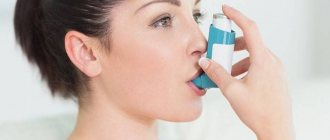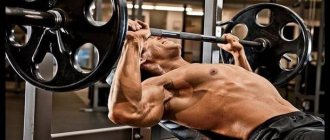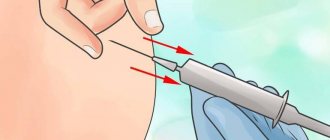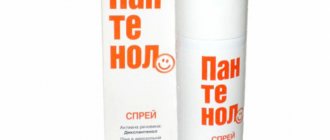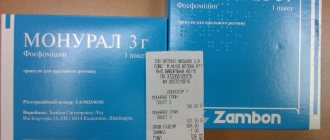Some diseases of the digestive tract are accompanied by unpleasant clinical manifestations that cannot be controlled by following a diet. Motilak is an effective and safe medicine to combat such symptoms. It acts quickly and is extremely rarely accompanied by negative side effects.
Release form and composition
The following dosage forms of Motilac are produced:
- Tablets: biconvex, coated with a white or almost white film coating; on the cross section one or two layers are visible, the inner layer is white with a yellowish tint or white (in cellular contour packages of 10 pcs., 1 or 3 packages in a cardboard pack; in dark glass jars of 30 pcs., 1 jar in a cardboard pack ; in polymer containers of 2 or 2.5 kg);
- Lozenges: biconvex, round, almost white or white (in contour packs of 10 pcs., 1 or 3 packs in a cardboard pack; in dark glass jars of 30 pcs., 1 jar in a cardboard pack).
1 tablet contains:
- Active ingredient: domperidone – 10 mg;
- Auxiliary components: talc, titanium dioxide, Tween-80, hydroxypropyl cellulose, sodium carboxymethyl starch, magnesium stearate, povidone, colloidal silicon dioxide, microcrystalline cellulose, lactose, potato starch.
1 lozenge contains:
- Active ingredient: domperidone – 10 mg;
- Auxiliary components: magnesium stearate, dextrose, peppermint oil, Primogel (sodium carboxymethyl starch), crospovidone (polyplasdon IKS EL-10), sucrose (sugar), advantose FS 95 (fructose).
Description of Motilak
The medicine Motilak belongs to the regulators of motor function of the gastrointestinal tract, this drug is produced by Russia, costs 320 rubles for 30 tablets. The active substance is domperidone (10 mg), additional components of the composition are as follows:
- starch;
- silicon dioxide;
- hydroxypropylcellulose;
- talc, etc.
Domperidone is a modern prokinetic agent, an antagonist of dopamine receptors in the brain. Its action is similar to that of metoclopramide, but the difference is its greater safety. Domperidone does not penetrate the blood-brain barrier, and therefore practically does not provoke extrapyramidal disorders.
The drug also has negative qualities - it increases the production of prolactin by the pituitary gland, which causes a number of side effects.
As a dopamine antagonist, the substance has antiemetic properties. When taken orally, the tablets increase the duration of contractions of the antrum of the stomach and duodenum. Due to the accelerated rate of peristalsis, the stomach empties faster, and the pressure of the esophageal sphincter increases. This reduces the likelihood of stomach contents refluxing into the esophagus and prevents heartburn. Domperidone does not affect the secretion of hydrochloric acid.
Indications for use
Motilak is used for a complex of dyspeptic symptoms, often associated with esophagitis, gastroesophageal reflux, and delayed gastric emptying:
- Pain in the upper abdomen, a feeling of bloating, a feeling of fullness in the epigastrium;
- Belching, excessive accumulation of gases in the gastrointestinal tract due to insufficient excretion or increased gas formation (flatulence);
- Heartburn with or without reflux of stomach contents into the oral cavity.
Motilak is also used in cases of nausea and vomiting of any etiology, including infectious, organic, functional origin, caused by diet, intoxication, drug therapy or radiotherapy, which occurred when taking dopamine agonists for the treatment of Parkinson's disease (levodopa and bromocriptine).
Contraindications
- Prolactinoma;
- Gastrointestinal bleeding, mechanical obstruction or perforation (cases when stimulation of the motor function of the stomach is strictly unacceptable);
- Children under 5 years of age;
- Hypersensitivity to the components of the drug.
During pregnancy and during breastfeeding, the use of Motilak is permissible only in cases where the expected effect of therapy for the mother significantly exceeds the possible risk for the developing fetus or infant.
Motilak during pregnancy
Most expectant mothers at the very beginning of pregnancy suffer from nausea due to toxicosis. Indications for the use of Motilak do not imply its use for this symptom. There have been no studies confirming or refuting the effect of domperidone on the fetus, so it is prescribed to pregnant women with particular caution, if there are direct indications. The use of a medication is advisable only in situations where its positive therapeutic effect is higher than the expected risk to the child.
It is important to take Motilak tablets correctly - the use of the medicine should be carried out strictly in accordance with the individual prescriptions of the gastroenterologist. Do not take more than 1-2 lozenges or capsules at a time, exceed the maximum daily dosage of 30-60 mg of the active ingredient, or use the drug unless indicated. Violation of the specialist’s recommendations is fraught with the development of severe endocrine and hormonal pathologies.
Directions for use and dosage
Pills
The tablets are taken orally. For continuous therapy, it is preferable to take the drug 15-20 minutes before meals.
Recommended dosage regimen:
Chronic dyspeptic symptoms: children over 5 years old - 2.5 mg per 10 kg of body weight 3 times a day; adults – 10 mg 3 times a day. If necessary, take 1 additional tablet before bedtime. If the effect of therapy in adults is insufficient, the dose of Motilak is doubled;
Acute and subacute conditions (primarily with nausea and vomiting): children over 5 years old - 5 mg per 10 kg of body weight 3-4 times a day; adults – 20 mg 3-4 times a day. If necessary, take 1 additional tablet before bedtime.
Absorption of the drug slows down when taken after meals.
Lozenges
The tablets are dissolved 15-20 minutes before meals. The dosage of Motilak for children over 5 years of age and adults in the treatment of chronic dyspeptic symptoms is 10 mg 3-4 times a day (an additional dose of 1 tablet before bedtime is allowed).
In cases of severe nausea and vomiting - 20 mg 3-4 times a day and additionally before bedtime.
In case of renal failure, depending on the severity, the frequency of dosage forms of Motilak should be reduced to 1-2 times a day.
special instructions
The drug should be taken with caution in patients suffering from renal failure, since domperidone is metabolized in the liver.
There is practically no need to adjust the dosage regimen for renal failure, since a very small amount of Motilac is excreted unchanged by the kidneys. However, in cases of repeated therapy, it is recommended to reduce the frequency of drug administration depending on the severity of the disease (a dose reduction may also be required). Patients with impaired renal function receiving long-term treatment with the drug should be regularly monitored.
When prescribing a drug with antisecretory or antacid drugs, it is important not to allow them to be taken simultaneously.
Contraindications for Motilak
The medicine can be taken by children, but only from 5 years of age. Before this age, you should choose a different method of relieving unpleasant symptoms (usually it is recommended to consume analogues in suspension or dissolve and chew special forms of tablets). The use of Motilac is also prohibited if you are intolerant to domperidone or allergic to auxiliary components.
It is strictly forbidden to be treated with Motilak in case of gastrointestinal bleeding or suspected such conditions.
Contraindications include the presence of prolactinoma, a tumor of the pituitary gland that provokes the production of prolactin. If the patient has diseases in which stimulation of gastrointestinal motility would cause harm, Motilak should also not be taken (for example, gastric perforation, mechanical obstruction of the gastrointestinal tract). Other contraindications:
WE RECOMMEND THE ARTICLE!
Drotaverine helps relieve spasms and severe pain. Read more >>
- liver diseases that cause serious dysfunction of this organ;
- advanced stage renal failure.
When the weight of an adult patient is less than 35 kg, the medication is taken with caution, under the supervision of a physician. There is no data on the occurrence of malformations in the fetus if Motilak is taken by a pregnant woman. But the drug is prescribed during pregnancy only if the expected benefit is higher than the risk. During lactation, treatment should be carried out with caution, while transferring the child to artificial feeding. This is due to small amounts of domperidone passing into breast milk, which has an unknown likelihood of adversely affecting the baby.
Drug interactions
Effect of drugs/substances on domperidone when used simultaneously:
- Anticholinergic drugs: may neutralize its effect;
- Antacids, gastric secretion inhibitors: reduce its bioavailability.
Based on in vitro studies, it was suggested that when Motilak is used in combination with drugs that significantly inhibit the CYP3A4 isoenzyme (antidepressant nefazodone, HIV protease inhibitors, macrolide antibiotics, azole antifungals), an increase in plasma domperidone levels is possible.
Domperidone has no effect on the level of digoxin and paracetamol in the blood.
It is possible that the drug may affect the absorption of enteric-coated or delayed-release drugs administered orally.
Motilak - side effects
Negative symptoms accompanying domperidone therapy are extremely rare. Motilak side effects:
- spasms in the intestines that randomly disappear and appear;
- skin rashes;
- extrapyramidal disorders;
- galactorrhea;
- increased concentration of the hormone prolactin in plasma;
- gynecomastia;
- anaphylactic condition;
- hives.
A number of undesirable clinical phenomena may occur due to an overdose of Motilak:
- disorientation in time, space;
- drowsiness;
- motor disorders.
When using the drug, it is important to study its interaction with other pharmacological agents. The bioavailability and effectiveness of the drug is reduced or completely neutralized if taken simultaneously:
- antisecretory drugs;
- M-anticholinergics;
- antacids;
- cimetidine;
- sodium bicarbonate.
Acceleration of absorption of the active ingredients of Motilak and an increase in its concentration in the blood are facilitated by:
- drugs from the azole group;
- antifungal medications;
- human immunodeficiency virus protease inhibitors;
- macrolide antibiotics;
- antidepressants, especially those based on nefazodone.
The active component is well compatible with some drugs, because they do not mutually affect the content of active chemicals in biological fluids:
- dopaminergic receptor agonists;
- digoxin;
- neuroleptics;
- paracetamol and its derivatives.


